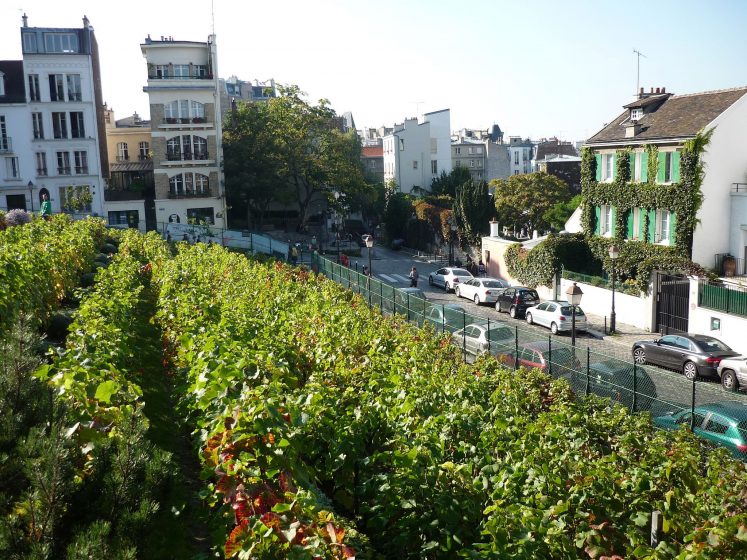6 Easy Facts About City Blooming Described
6 Easy Facts About City Blooming Described
Blog Article
The Buzz on City Blooming
Table of ContentsGet This Report on City BloomingCity Blooming for DummiesThe smart Trick of City Blooming That Nobody is Talking AboutGetting My City Blooming To WorkHow City Blooming can Save You Time, Stress, and Money.
Intrigued in growing food for sale in the City of Chicago? Below is a checklist of regularly asked questions pertaining to the guidelines and laws that cultivators need to take into consideration when preparing an urban farming task.
The zoning modification does not change any type of various other codes taking care of composting, structure permits, purchasing or leasing City owned residential property, organization licenses or ecological contamination. There are existing codes that manage these problems and they stay in complete result and might apply to your task. Community yards are commonly possessed or handled by public entities, public organizations or community-based organizations and kept by volunteers.
Urban ranches grow food that is meant to be marketed, either on a not-for-profit or for-profit basis. Due to their industrial purpose, city ranches need a business license. Yes. A neighborhood garden is enabled to market surplus generate that was grown on site if the sales are accessory or subordinate to the garden's key function defined above.
The Only Guide for City Blooming
The amount of compost product can not go beyond 25 cubic backyards at any offered time according to the requirements in 7-28-715 of the City's Municipal Code. Due to the fact that the dirt at many brand-new yard sites needs changing, garden compost, dirt, timber chips, or various other materials can be gotten to create or enhance the expanding space.

If a structure permit is needed then the hoophouse will certainly be thought about an accessory building. You can learn even more about the building authorization requirements by getting in touch with the Department of Structures. The 25,000-square-foot size limit is meant to stop a solitary area yard from controling a given block or interfering with the block's existing property or commercial character.
The limit does not apply to yards found in Public Open Space (POS) areas. Can there be greater than one area garden that is 25,000 square feet on a solitary block? Yes. The size restriction relates to individual yards, not to individual blocks. No. Fence is not needed, nevertheless, yards that have large parking lot might be needed to set up secure fencing or various other landscaping features.
Our City Blooming Statements
B1 & B2 areas require that all business usage activities be performed inside. R areas restrict business task. The laws reflect the objective and intent of the Zoning Code. Is fence required for city ranches? Yes. Fences might be required, along with landscaping and screening, for specific parking lot and exterior job or storage space areas depending upon place and the specific activity happening.
Urban ranches require structure authorizations and zoning authorizations prior to construction (eco-friendly practices). Various other forms of city testimonial might be required depending on certain frameworks, activities, dimension, landscape design, licensing, public heath and stormwater monitoring problems.
Yes. The type of permit is identified by what is taking place at the website. The Department of Service Affairs and Customer Security can aid determine the specific kind of service license that's called for. Yes. Off road parking is needed for the majority of commercial jobs in Chicago. The required number of garage is based upon the number of staff members working with site and not the square video footage of the growing room.
The Best Strategy To Use For City Blooming

Yes. A city ranch can offer garden compost material generated on site, however, the procedure should follow the regulations in 7-28-715 of the Chicago Municipal Code. Yes. Aquaponic systems are allowed inside on urban farms in many zoning areas. A zoning review and structure permit is needed in order to install frameworks or systems and a service permit is needed as explained above.
Approximately five hives or swarms of honey bees may be kept as an accessory use. However, beekeepers need to sign up with the Illinois Department of Farming. To learn more concerning the suggested zoning amendment you might call the Department of Housing and Economic Growth, Bureau of Preparation and Zoning at 312.744.8563.
Farming in cities and metropolitan areas A metropolitan ranch in Chicago. Urban agriculture refers to numerous methods of cultivating. https://www.abnewswire.com/companyname/cityblooming.com_137622.html#detail-tab, processing, and distributing food in metropolitan locations. The term likewise applies to the location activities of pet husbandry, tank farming, beekeeping, and gardening in an urban context. Urban agriculture is distinguished from peri-urban agriculture, which occurs in rural areas beside suburban areas.
The Facts About City Blooming Revealed
It can involve a movement of natural cultivators, "foodies" and "locavores", who look for to form socials media started on a common ethos of nature and neighborhood holism. These networks can establish by means of formal institutional assistance, coming to be incorporated right into neighborhood town as a "change town" activity for lasting city growth.
The much more direct access to fresh veggie, fruit, and meat products that might be become aware with metropolitan farming can boost food safety and security and food safety and security while lowering food miles, causing reduced greenhouse gas exhausts, therefore adding to climate modification reduction. Some of the initial evidence of urban agriculture comes see this from Mesopotamia.
Report this page